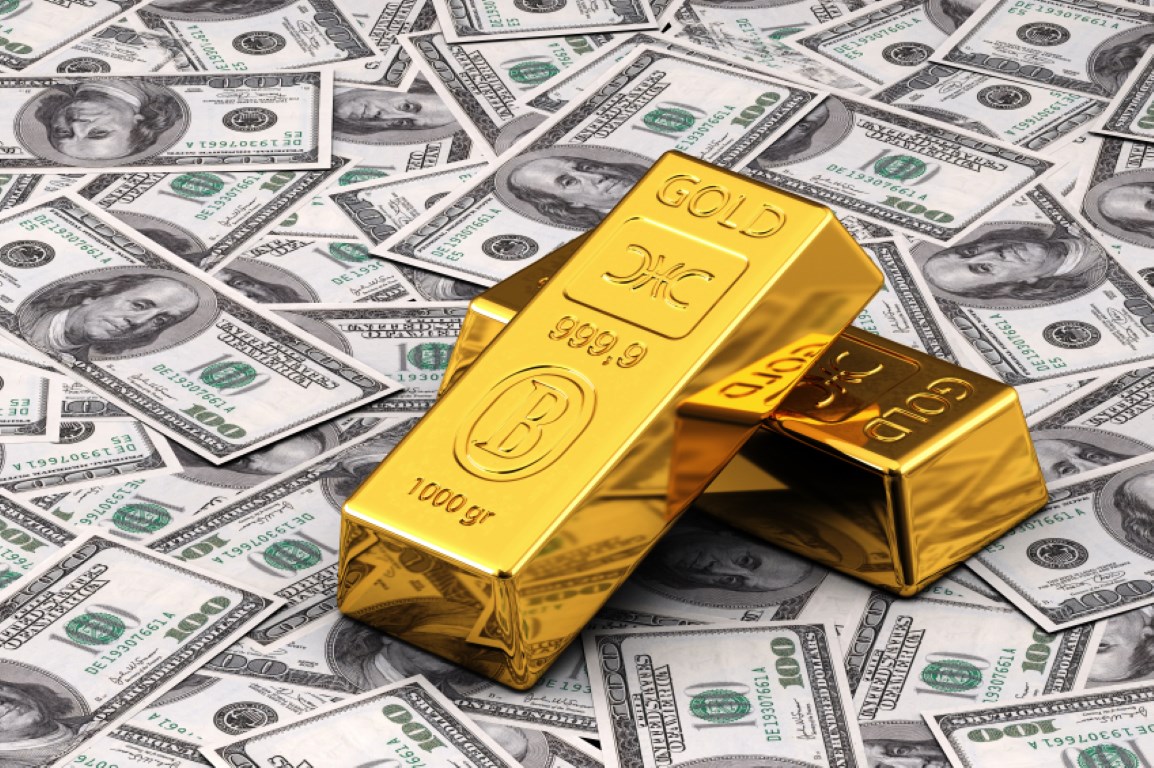Gold demand up as countries abandon US dollar
October 30, 2018 | Expert Insights

Central banks around the world are turning to gold as an alternative to the US dollar, which they see as being undermined by America’s aggressive trade policy and geopolitical uncertainty.
Background
Gold is a chemical element and atomic number 79, making it one of the higher atomic number elements that occur naturally. In its purest form, it is a bright, slightly reddish yellow, dense, soft, malleable, and ductile metal. Chemically, gold is a transition metal and a group 11 element. It is one of the least reactive chemical elements and is solid under standard conditions.
A relatively rare element, gold is a precious metal that has been used for coinage, jewellery, and other arts throughout recorded history. In the past, a gold standard was often implemented as a monetary policy, but gold coins ceased to be minted as a circulating currency in the 1930s, and the world gold standard was abandoned for a fiat currency system after 1971.
A gold standard is a monetary system in which the standard economic unit of account is based on a fixed quantity of gold. Three types can be distinguished: specie, bullion, and exchange. Most nations abandoned the gold standard as the basis of their monetary systems at some point in the 20th century, although many hold substantial gold reserves.
The United States is the single largest holder of gold reserves with 8,100 tons which constitutes 74% of its foreign reserves.
Analysis
Central banks around the world are turning to gold as an alternative to the US dollar, which they see as being undermined by America’s aggressive trade policy and geopolitical uncertainty. Demand for gold was up 42 per cent year on year in the first quarter of 2018 among central banks, the World Gold Council (WGC) statistics say. Russia and Turkey are the largest net buyers.
Central banks added a net total of 193.3 tons of bullion in the half of 2018, an 8 per cent increase from 178.6 tons bought in the same period last year. This marks the strongest six months for central bank gold buying since 2015, the WGC notes.
As of the first half of 2018 central banks increased their gold holdings to $1.36 trillion, around 10 per cent of global foreign exchange reserves, the WGC said. An analyst has told RT that the reason behind the move is a wish to diversify from the greenback.
The United States has long used the dollar to put pressure on competitors. This has always caused anger in the world community. And now the fight against the dollar has reached Europe. Russia has stepped up buying gold in its reserves in the face of new US sanctions and a possible disconnection from the dollar system. A similar strategy is now being observed in many countries in Europe and Asia. China, Turkey, Venezuela, Iran, Qatar and Indonesia, are aimed at the de-dollarization of economies and foreign trade. All these countries are significantly increasing their gold reserves, the expert says.
As the WGC notes in its report, gold buying is not only about hedging currency risks. “In an environment of heightened geopolitical tensions, gold is an attractive asset because it is not anyone else's liability and does not carry any counterparty risk,” the report says.
Gold is already a familiar asset class for central banks, but the changing nature of the gold market – with ever-growing consumption coming from developing economies – means that gold is increasingly aligned with emerging market economic patterns. Central banks may increasingly recognize that the rules of the game are changing.
Assessment
Our assessment is that central banks are hedging against the volatile global markets by investing into a more stable commodity. Gold is the best non-currency commodity to store foreign exchange because of its limited supply and global demand. We believe that the central banks are mitigating the shockwaves of the ongoing trade by shoring up as much gold as possible. We also feel that the US may release some of its gold reserves in the market to balance the sharp increase in gold prices in the near future.








Comments